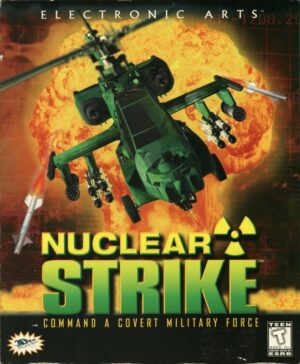Retro Replay Review
Gameplay
Bottom of the 9th delivers a deceptively deep simulation-style baseball experience that stands out among early ’90s sports titles. Rather than offering quick pick‐up‐and‐play arcade action, the game requires you to pay attention to each player’s individual stats and make strategic decisions at the plate and on the mound. Pitching feels weighty thanks to the “Pitching Bar,” which visually indicates a pitcher’s fatigue level, forcing you to mix fastballs, curves, and changeups carefully over the course of nine innings.
(HEY YOU!! We hope you enjoy! We try not to run ads. So basically, this is a very expensive hobby running this site. Please consider joining us for updates, forums, and more. Network w/ us to make some cash or friends while retro gaming, and you can win some free retro games for posting. Okay, carry on 👍)
The batting mechanics revolve around a “Streak Bar” that measures a hitter’s current form, influencing both contact rate and power output. As you ride hot streaks, well-timed swings can send the ball sailing over the fence, while a cold streak might result in weak grounders or strikeouts. This stat-driven approach encourages you to build lineups around players’ strengths, from contact specialists to power hitters, making every at-bat a tactical choice rather than a reflex test.
Game modes include Exhibition, Season, and Playoffs, each allowing you to face off against the CPU or a friend in local multiplayer. The inclusion of 300 real MLB players—albeit without official team names or logos—gives you ample depth for roster-building. For those who crave personalization, the Dream Team creation mode lets you assemble your ultimate squad from any of the available players, balancing speed, power, and pitching arsenals to your liking.
Graphics
Visually, Bottom of the 9th embraces a clean, functional aesthetic typical of its era. Player sprites are well-proportioned, with distinct uniforms—even if they’re generic—that help you identify your lineup at a glance. Stadium backdrops are varied, offering both day and night settings along with a handful of camera angles, from behind the pitcher to a top-down overhead view, so you can pick the perspective that best suits your play style.
Animation is smooth, especially on pitching wind-ups and batting follow-throughs. Fielding and base-running animations are serviceable, though they lack the polish of later 16-bit titles. On infield grounders and pop flies, defenders snag the ball with crisp transitions, while runners round the bases with a satisfying sense of momentum. Batter and pitcher zoom-ins during key moments—like a bases-loaded walk or a two-seam fastball jam—add a bit of drama even without modern cinematic flair.
While the absence of real MLB team logos and stadium designs may disappoint purists, the game compensates with clear HUD elements. The Streak and Pitching Bars are always in view, letting you track hot hitters and weary arms without interrupting the flow of play. In short, the graphics may not dazzle by today’s standards, but they remain functional, engaging, and true to the retro charm.
Story
As a sports simulation, Bottom of the 9th offers no narrative campaign or character arcs. Instead, its story is written inning by inning, game by game. You’re the architect of your own baseball journey—managing lineups, overcoming slumps, and making clutch managerial decisions that can turn a tight contest into a triumphant victory. Each game in Season mode feels like a chapter, with leaderboard standings and playoff brackets driving your motivation to keep pushing forward.
The lack of a scripted storyline is hardly a drawback for fans of baseball realism. The game’s narrative emerges organically from on‐field results: a midseason hot streak that catapults you into first place, a last‐inning rally to force extra innings, or a stellar rookie performance that has the crowd buzzing. In multiplayer, the friendly rivalry you build with your opponent becomes the de facto storyline, turning simple exhibition matches into memorable “epic comeback” tales.
Customization further fuels your personal saga. Creating a Dream Team allows you to rewrite baseball history: pairing the era’s top sluggers with ace pitchers, or experimenting with lineups that mix speed merchants and power hitters. The unfolding drama isn’t provided by the developers—it’s generated by your roster moves, marking decisions, and the unpredictable ebb and flow of America’s pastime.
Overall Experience
Bottom of the 9th stands as a robust early entry in Konami’s baseball lineage, offering depth and longevity well beyond its first-generation contemporaries. Its focus on player stats, fatigue management, and lineup construction makes it feel like a precursor to modern simulation titles, even though it lacks an official MLB license. The core gameplay loop of planning, executing, and adjusting strategy inning after inning remains engaging decades later.
Multiplayer matches are where the game truly shines. Whether you sit side by side with a friend on the couch or challenge the CPU through a full 162-game Season, every contest is a test of skill, patience, and roster management. Custom camera angles and clear HUD meters ensure that you’re always in control of the action, while the Dream Team mode provides near‐endless replay value for those who love tinkering with rosters.
While modern gamers may find the graphics and lack of team branding quaint, Bottom of the 9th’s dedication to simulation depth makes it a worthy pick for retro sports fans. Its blend of statistical strategy, varied modes, and customizable features creates an experience that still resonates with anyone looking to capture the thrill of late-inning heroics. For those seeking an authentic, unhurried baseball title with genuine managerial challenges, Bottom of the 9th remains a noteworthy classic.
 Retro Replay Retro Replay gaming reviews, news, emulation, geek stuff and more!
Retro Replay Retro Replay gaming reviews, news, emulation, geek stuff and more!




Reviews
There are no reviews yet.